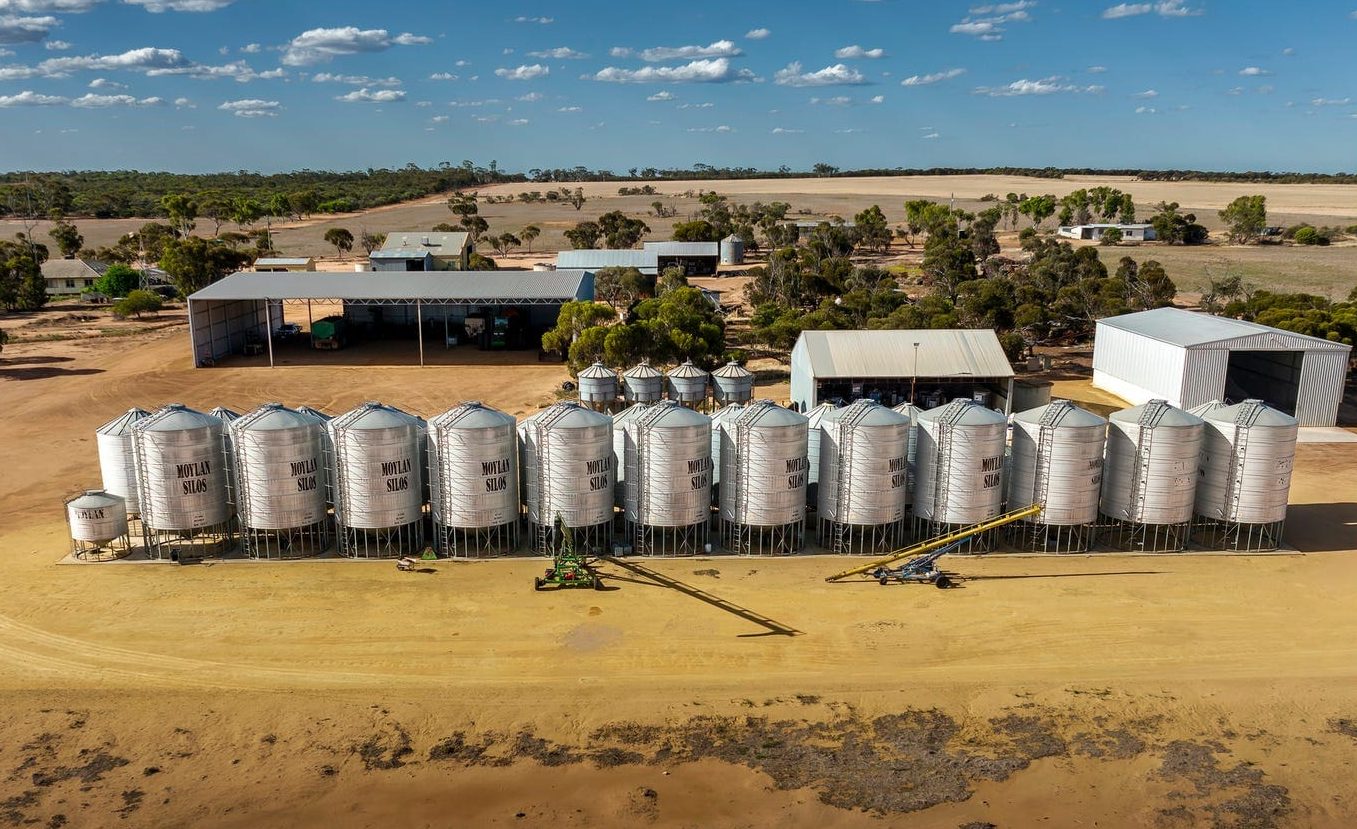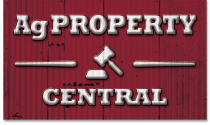
The 7970ha Beria in WA’s eastern Wheatbelt sold locally this year for close to $7M to represent good value for large-scale cropping country. Photo: Peter Sippe, Elders
In our final weekly property review for the year, experts from three rural property agencies reflect on the year that was.
Elders
Elders Farmland Agency and Investments general manager Mark Barber said this year’s year rural property market continued to see low turnover by number for all asset classes.
“By mid-year there had been 16 consecutive quarters of volumes trending down,” Mr Barber said.

Elders Farmland Agency and Investments general manager Mark Barber.
As seasonal conditions deteriorated in the second half of the year in some areas, and predictions of drought increased, those thinking of selling decided to trade on until conditions improved.”
Similarly, some buyers became cautious but genuine qualified purchasers remained active and met the market.
“These producers are taking a longer-term view of the market and looking through the current seasonal and market conditions.
“They will compete for properties that are strategically important to them and their families.”
Mr Barber said large-scale family farmers continued to be active and competitive throughout the year, but corporate and institutional investors attracted the most attention.
“They are still actively raising money and investing, and with the low volume of turnover, Elders has fielded numerous enquiries to seek out specific opportunities in this segment of the market.”
Mr Barber said it was difficult to single out one group of buyers as more active than others.
“Perhaps the best way to segment the market is, the most active are those who consider agricultural land as a long term, capital secure asset with competitive finance yield, who believe the fundamentals of agricultural commodity demand are strong.”
“This segment will be very competitive for assets that are strategically important to them,” he explained.
Values
Reflecting on 2023, Mr Barber said rural property values reached new highs in almost every state by mid-year.
“While dry conditions and corrections in the livestock market created some headwinds in the second half of the year, there has been no evidence of a widespread systematic correction of the property market with low levels of supply continuing to support values.”
“By the middle of the year, Victoria and Tasmania experienced strong growth after significant decreases in the volume of properties coming on the market.”
Mr Barber said it is tempting to view 2023 from the perspective of the last few months however, the year has seen the continuation of strong growth for farmland values with some head winds in the second half.
“Recent widespread rain has shown that predictions of widespread drought are just that, predictions, and must be treated with caution, and managed accordingly.”
Mr Barber urged property owners to take a long-term view of the farmland market, which has produced an average capital growth rate of 8.5 percent nationally over the last five years and much higher in some areas of the country.
Carbon
Mr Barber said demand for land suitable for carbon and other alternative land use continued to gain momentum during the year.
“The Elders Carbon Farming team has been overwhelmed with inquiry for farmland suitability, pre-feasibility studies and full project application assistance.”
Standout region
Mr Barber identified Western Australia and South Australia, and higher rainfall areas of southern Australia, as areas that performed well this year.
“With at least four good years under their belt and an exceptional year in 2022, WA and SA property owners are continuing to trade as they believe returns from their farming assets are better than other investment opportunities.”
Mr Barber said demand for good-quality cropping country continues to outstrip supply, particularly in higher and more reliable areas.
JLL
JLL Agribusiness director Bhavin Patel described the 2023 rural property market as increasingly divided across all sectors, as well as geographically.
“Market sentiment continues to be heavily dictated by commodity prices, and so where prices have held up, those areas continue to transact at elevated levels,” Mr Patel said.
“Where prices have fallen sharply, such as cattle, the spread between vendor and buyer expectations has widened, leading to an increase in the time taken to transact, as well as some price decrease in the southern states.”
Values

JLL Agribusiness director Bhavin Patel.
Mr Patel said the median price of farmland has peaked for this cycle and will continue to soften for multiple factors, including the possible onset of El Niño, increases in interest rates, and softening in commodity prices.
“Having said this, strategic high-quality farmland will continue to command a premium as global appetite to allocate capital to alternate real estate sectors such as agriculture grows, given the challenges faced in the more mature and traditional commercial real estate markets of office, retail and, to a lesser extent, industrial.”
Mr Patel said although commodity prices in general are moderating, there are individual commodities defying the general trend and commanding higher prices.
“As a result, agri sectors are achieving higher commodity prices, strategic high quality assets and assets with multiple revenue streams are anticipated to continue to trade well and achieve higher sale price.”
Buyers
JLL senior director Chris Holgar said 2023 saw a return to the normal dynamic where private families were actively competing with institutional investors, who have made a strong return from a COVID-induced hiatus.
“Many institutions are buoyed by a period of capital recycling to now deploy capital in new and varied mandates that represent, on some occasions, a very different approach.”
JLL director Clayton Smith said corporate activity has returned, with a couple of off-market confidential transactions squared away for settlement next year.
“Private-owned family investors dominate the mid-level market once again.
“Most of the activity we have seen has been on the Western Downs with numerous mid-range sales transacting from $9 million to $14M, which is about $5000 per hectare.”
Mr Smith said recent water transactions are hitting new record values.
“This is one sector that has been overlooked in recent wetter seasons
“The onset of dryer weather patterns and strong hay, grain and cotton commodity prices are driving stronger scrutiny.
“Borders Rivers water has seen recent sales with very strong upward movement.”
Standout region
Mr Holgar said despite the obvious headwinds of weather, cost of debt and commodity prices, the market as a whole performed consistently over the course of 2023.
“High-quality cropping properties are highly sought after for their reliability and consistency, while those properties with alternative revenue streams, be it through carbon sequestration or land conversion, continued to perform.”
Inglis
Inglis Rural Property chief executive offer Sam Triggs said the heat which turbocharged the rural property market in the last 12 to 24 months, driven by a trifecta of cheap debt, strong commodity prices, and brilliant seasons, saw a seismic upward shift in rural assets.
“Today, these market fundamentals have been inverted and buyer sentiment has reduced urgency, however strong interest remains for high-quality and well-developed assets,” Mr Triggs said.
Values
In terms of record property prices, Mr Triggs said records are made to be broken, so naturally they are being broken at a higher frequency.
“Over the past three years, the rural property market witnessed a rapid growth phase coinciding with an increased volume of transactions.”

Inglis Rural Property CEO Sam Triggs.
Mr Triggs said however, the number of transactions backed off as the market felt the pinch of interest rates and a waning seasonal outlook.
“Recent rain has shown how quickly confidence can swing commodity markets.
“Looking ahead, property prices will be driven by farmer sentiment influenced by seasons and commodity prices and the decision to buy or sell.”
Buyers
Mr Triggs said corporates, cash and families were the most active buyers in the 2023 rural property space.
“This trend is not new, but they are the clear leaders in the current market.”
Mr Triggs said a notable factor in 2023, as a direct result of COVID 19, were overseas buyers shoring up supplies of raw commodities to overcome any future disruptions.
“Multi-national corporations (including Asia and North America) have been securing production assets to accelerate and underpin vertical integration of their retail goods – the ‘paddock to plate’ model in both food and/or fibre.”
The sale of Gundaline to China’s Smart Shirts is an obvious example.
Standout sale
For Inglis Rural Property, the standout farming sale in 2023 was the 2658ha Ruvigne Station near Gunnedah, offered with 2063ML of water entitlements as well as a 2759ML floodplain harvesting licence and 4090ML of dams and natural storages.
Mr Triggs said it was one of the largest sales on the Liverpool Plains of New South Wales and featured an iconic homestead and first-class irrigation development.
It was sold to the Baillieu family following a competitive expressions of interest process and while the price was undisclosed, it is understood to have transacted for close to the original guide of $45M.
Ruvigne has 14km of direct frontage to the Mooki River and grows around 5000 bales of cotton a year, as well as wheat, barley, sorghum, soybeans, mungbeans, sunflowers and canola.
Standout region
Mr Triggs said there is a two-speed market operating for rural land, with quality assets driving strong interest, particularly in southern NSW.
“Corporate and institutional backed funds, particularly offshore groups, have been attracted by the relatively low Australian dollar, while the larger family farming units have expanded with neighbouring acquisitions.”
Mr Triggs said many farmers in the region are inter-generational with land tightly held and limited trades.
“The Riverina region has also performed well, particularly arable land that is suitable for cereal cropping and/or irrigation assets allowing profitability to be underpinned despite seasons.”
Mr Triggs also singled out high-quality arable farmland on the Liverpool Plains around Gunnedah in northern NSW as a standout.
“This country commanded and still commands strong demand from buyers due to its versatile summer and winter cropping options and reliable irrigation supply.”
This is Grain Central’s final property story for 2023.
I wish all readers and our property-industry contacts across Australia and beyond a Merry Christmas and a safe and happy New Year.
Property stories will return in January 2024.
In the meantime, readers may be interested in perusing our Properties for Sale grain listings or our Recent Property Sale Results found on AgProperty Central (Beef and Sheep Centrals); both feature easy-to-use search functions.
Get our free news straight to your inbox – Click here

HAVE YOUR SAY